The Honor 20 Pro: A Quad-camera Hands-On Review
by Andrei Frumusanu on May 21, 2019 10:45 AM EST- Posted in
- Mobile
- Smartphones
- Honor 20
- Honor 20 Pro
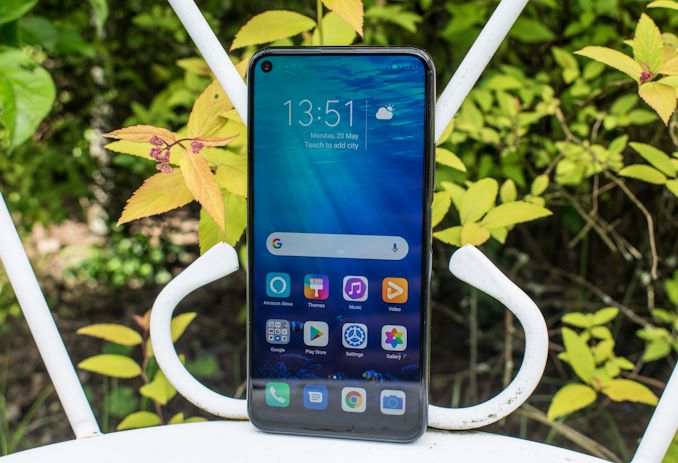
As a sister brand of Huawei, Honor in the last few years has seen quite a rising success in terms of delivering high value devices. In fact Honor’s smartphones have become so popular that the brand by itself is able to take a notable amount of marketshare percentage in multiple markets, aiming to become #3 in some countries.
Today Honor is announcing the new Honor 20 Pro series – a continuance of the company’s mainline series which made it so popular to begin with. The new Honor 20 Pro takes elements from Huawei P30’s series, such as new camera systems and adds its own touch, deriving design decisions from this year’s Honor View20.
The Honor 20 Pro continues to use the 48MP sensor we first saw in the View20 and adds a 3x optical zoom module, a new wide angle camera module, and curiously enough a new dedicated macro camera module. We’ve had the phone for a few days and were able to do some camera testing as well test essentials such as the battery life of the phone. Let’s start with the specifications:
| Honor Series | |||
| Honor 20 Pro | |||
| SoC | HiSilicon Kirin 980 2x Cortex-A76 @ 2.60 GHz 2x Cortex-A76 @ 1.92 GHz 4x Cortex-A55 @ 1.80 GHz Mali G76MP10 @ 720MHz |
||
| DRAM | 8 GB LPDDR4X | ||
| Storage | 256GB | ||
| Display | 6.26" LCD 2340 x 1080 (19:5) |
||
| Size | Height | 154.6 mm | |
| Width | 73.97 mm | ||
| Depth | 8.44 mm | ||
| Weight | 182 grams | ||
| Battery Capacity | 4000mAh 22.5W Charging |
||
| Wireless Charging | - | ||
| Rear Cameras | |||
| Main | 48MP IMX586 0.8µm pixels (1.6µm 4:1 12MP binning) f/1.4 lens OIS PDAF & Laser Autofocus |
||
| Telephoto | 8MP f/2.4 3x Optical zoom 80mm equiv. FL |
||
| Wide | 16MP f/2.2 117° Ultra wide angle 17mm equivl. FL |
||
| Extra | 2MP F/2.4 macro module | ||
| Front Camera | 32MP f/2.0 | ||
| I/O | USB-C no headphone jack |
||
| Wireless (local) | 802.11ac Wave 2 Wi-Fi Bluetooth 5.0 LE |
||
| Other Features | Side fingerprint sensor (Power button combo) | ||
| Dual-SIM | Dual nanoSIM | ||
| Colours | Phantom Black, Phantom Blue | ||
| Launch Price | 599€ | ||
The new Honor 20 Pro, much like Huawei’s and Honor’s recent higher end devices, also comes with the new HiSilicon Kirin 980 chipset. We first covered the 7nm SoC last year in our Mate 20 and Mate 20 Pro review with impressive results, and the chip continues to hold up against the best flagship SoCs from the competition, including the Snapdragon 855 and Exynos 9820. The new phone isn’t Honor’s first Kirin 980 phone as that title went to the View20 in January. Much like the View20, the Honor 20 Pro performs similarly well.
While at the time of writing Honor hadn’t shared the price point of the Honor 20 Pro, it markets that the available models seem to be limited to a configuration of 8GB RAM and 256GB storage, which would mean we’re likely seeing a positioning towards the higher end of the spectrum.
The phone’s dimensions are just slightly smaller than the View20: We find a 6.26” screen instead of 6.4”, and this ends up with the device being 1.4mm narrower than its sibling. Although both phones come with 4000mAh batteries, the added camera hardware on the Honor 20 Pro puts it at 2g heavier than the View20 for a total of 182g.
The phone’s rear cover design reminds one more of Huawei’s P20 series: We see it curved on all edges. Officially Honor’s colour options are limited to “Phantom Black” and “Phantom Blue”, although my review unit is evidently purple with the phone’s box stating “Purple”. The back glass has an interesting reflection effect that reminds one of a holograph.
On the front of the phone we find a full-screen LCD panel that goes edge-to-edge. Honor continues the hole-punch design in terms of housing the front-camera, and the left corner positioning in my opinion is the better location for it compared to Samsung’s right-handed location. The hole diameter doesn’t seem to have changed from the View20 and remains slightly smaller than Samsung’s. The only negative is that the LCD backlight is still ever so slightly dimmer around the cut-out, an issue that’s not present with OLED screens.
In terms of display quality, the Honor 20 Pro panel seems to be improved over the View20’s as it has better viewing angles with less prominent light bleed when viewing it off-axis. The resolution is the same 2340 x 1080 which results in a 19.5:9 aspect ratio.
The rear of the phone features the main distinguishing characteristics of the Honor 20 Pro: A quad-camera setup. The main camera sensor is still an IMX586 as found on the View20 (and many other competing devices now), however Honor was able to majorly change the optics as it now employs an f/1.4 aperture lens and the module is now stabilised with OIS – a major addition which helps video recording. The sensor has a resolution of 48MP with 0.8µm pixel pitches, however the bayer colour filter has a native resolution of 12MP and this 4:1 binning mode resulting in effective 1.6µm pixels is the mode that will be the every-day use-case for the phone.
Added to the fray is a 3x zoom 8MP telephoto module. This unit seems to be derived from what we’ve seen on the P30 and Mate 20 Pro. Alongside the zoom module we find a 16MP wide-angle lens, also matching the capability of the P30 and the Mate 20.
The most curious and odd addition to the camera setup is the fourth module: A 2MP dedicated macro camera. Frankly the addition of this unit is quite confusing to me as we’ll see that its capabilities are not very great.
Alongside the flash we also find a laser-autofocus module which augments the PDAF of the sensors.
At the bottom of the phone we find a USB-C port alongside the main speaker as well as microphone. Unfortunately the Honor 20 Pro doesn’t come with a 3.5mm headphone jack, nor does it employ stereo speakers. While the main speaker is alright, its bottom firing directionality doesn’t compete with more recent devices from other vendors.
At the top of the phone we find the secondary microphone as well as an IR blaster.
Finally, the other distinguishing feature of the phone is the fact that the company has moved the fingerprint sensor from the rear of the phone to the side integrated into the power button. Unlocking the phone is extremely fast and I didn’t encounter any issues with the new sensor, with my only critique being that the buttons edges are quite unusually sharp.


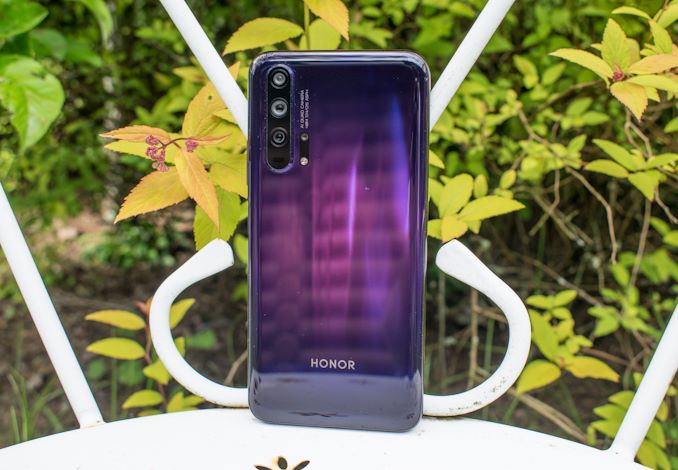
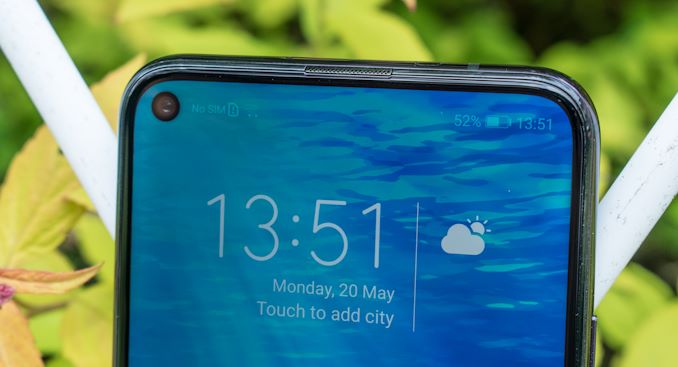
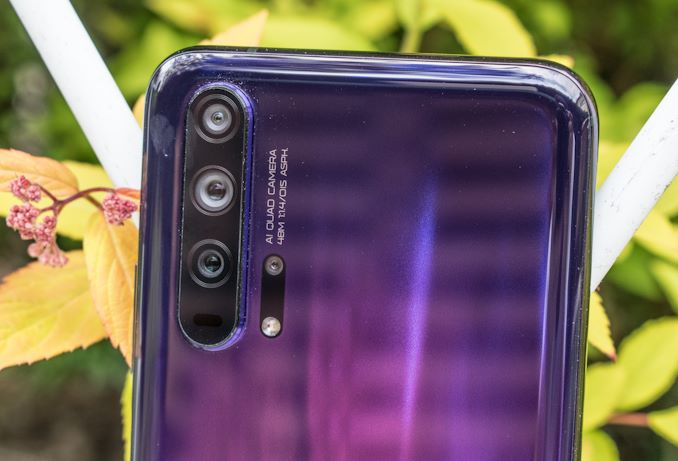


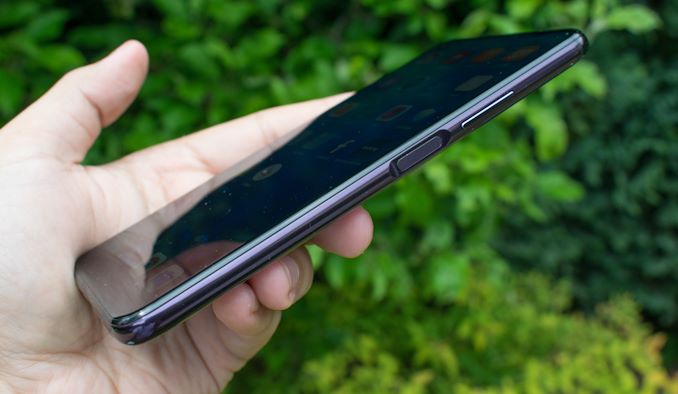








34 Comments
View All Comments
danielfranklin - Tuesday, May 21, 2019 - link
Yep.I sold my Mate 20 Pro and went back to the Pixel 3.
There was no comparison with the camera.
That said i have an iPhone XS Max as well and its camera is awful next to the Pixel too.
zamboni.palin - Wednesday, May 22, 2019 - link
I agree it's heavy-handed processing. But by the same token I honestly cannot understand how one can call the S10 pictures good: ridiculous colors, shadows blown completely out of proportion in HDR - as if you're making photos to look for forensic evidence, not capture real-life environments. I much prefer the Pixels.Andrei Frumusanu - Wednesday, May 22, 2019 - link
The S10's have the most accurate representations of the scenes and shadows; you don't clip shadows to near black at noon under full sunlight.zamboni.palin - Wednesday, May 22, 2019 - link
I cannot judge that, not having seen the real thing, so I must defer to you. But I find the Samsung colors (based on your pics and experience with previous Samy phones) far too strident, cartoonish even. And while you don't render shadows dark at noon, neither do you shine a flashlight on them. Again, though, I might be wrong 'in light of' the real thing.Darcey R. Epperly - Wednesday, May 22, 2019 - link
"Overall the Honor 20 Pro is quite the odd device", from the Conclusion site.Why is an odd device? And why "the". As non native speaker, I'm missing the
message. Can somebody help?
asfletch - Wednesday, May 22, 2019 - link
It's just a turn of phrase - nothing to worry about. "Quite an odd device" would convey almost the same meaning.BushLin - Tuesday, May 28, 2019 - link
Nothing to worry about... Except the Huawei ban, no access to Google Play or security updates!Peskarik - Wednesday, May 22, 2019 - link
The cameras in ALL Asian phones are optimized with Asian market in mind.That means human faces look unnatural, "beautified", you look like an alien.
I prefer Pixel phones, the photos come out much more natural looking.
In the end, all phone cameras, 5 or 10 of them with godzillion pixels etc produce low quality photos, it is just the nature of the thing, you want a good photograph for more than just showing on phone screen or sending through Whatsup - you get a proper camera.
edsib1 - Wednesday, May 22, 2019 - link
Do you run your battery life tests in performance mode? If not the performance is about 30% lower so not really a fair comparison to other flagship SOCs.Andrei Frumusanu - Wednesday, May 22, 2019 - link
Yes it was in performance mode.